1920s-1930s
The 1920s saw a movement of modern mass production methods in the toy industry. Tin toys, pressed metal and cast-iron toys, wooden and paper toys were now able to be produced cheaply. Small musical toys made in the shape of musical instruments became very popular, especially the free-reed musical toys that produce sound as air flows past a vibrating reed or comb of reeds in a frame (much like a harmonica or accordion). Then in 1927 polystyrene was invented. It was a tough, durable kind of plastic that was ideally suited to toy design, ushering in a new world of musical toy development for the following decades.
FREE REEDS (Blown Accordions/Mouth Harmonicas)
The Chicago based QRS-Devry Corporation, founded by Melville Clark in 1900, played an important role in developing the player piano. During the 1920s they began making the musical toys known as ‘Playasax’ and ‘Clarola.’ The concept was to make a free-reed instrument in the shape of a musical instrument. A metal hand crank was used to move the perforated paper roll (much like the player piano) over the front of the instrument, while you blew into the mouth cap.
Patented in 1924 by a French manufacturer Couesnon, was another free-reed toy instrument resembling a saxophone called the ‘cousenophone,’ also known as the ‘goofus.’ The reeds inside the mouthpiece cap vibrates when the player blows and presses the desired keys. Some may describe it as a mouth-blown accordion. While shaped like a saxophone, which is monophonic, the ‘couesnophone’ is a polyphonic instrument with more than one sound produced simultaneously.
From France and Germany came more free-reed toy instruments. The German company, Hohner Musikinstrumente, who for over a century are identified especially with harmonicas and accordions, used keys similar to a button accordion rather than a piano-like keyboard. Since these instruments were windblown, you could play two different pitches. One pitch when air is blown in and another pitch when air is drawn.

Couesnon ‘Goofus’
France
Metal
1924
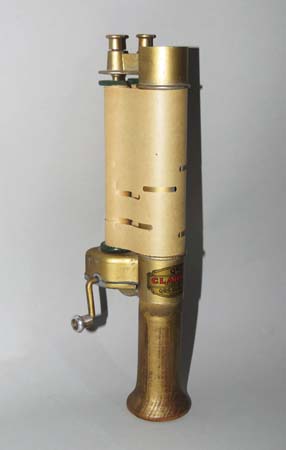
QRS ‘Clarola’
Chicago, Illinois
Wood, paper, metal
1920s
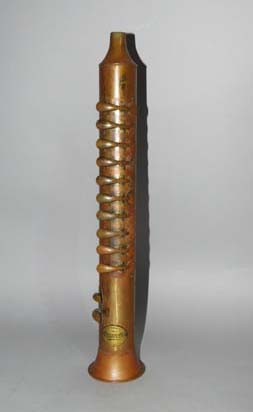
Hohner ‘Organette’
Germany
Model (#148) Metal
1924
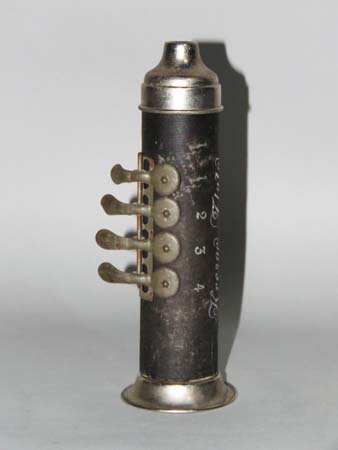
Kresge ‘Clarinet’
Detroit, Michigan
Tin, leather
1920s
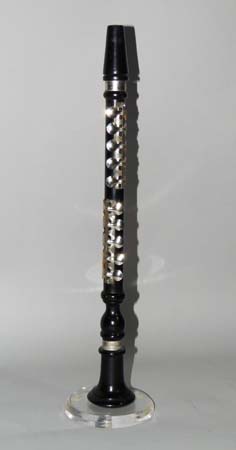
Clarinet
Marked: Czecho-Slovakia
Wood, metal
1920s
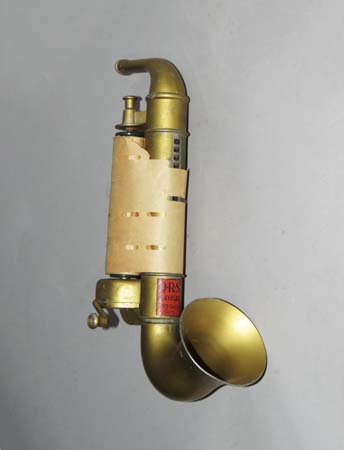
QRS ‘Playasax’
Chicago, Illinois
Wood, paper, metal
1920s
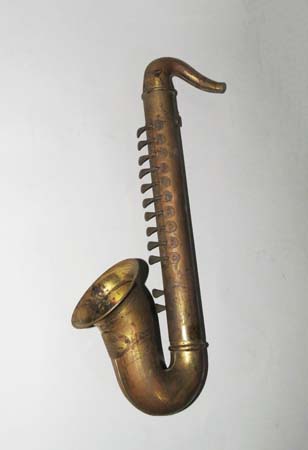
Hohner ‘Sax’
Germany
Metal
1930s
Windup - Mechanized Musical Toys
Windup (mechanized) musical toys were known as an automation toy powered by a clockwork motor which consists of a torsion spring of metal ribbon. While windup machines can be documented back to at least 1515 in France, European toy makers didn’t start making windup tin toys until the end of the 1800s. By the early 1900s American toy makers joined in, manufacturing intricate and animated design musical toys, while one of the most recognized toy manufacturing companies of Europe, named ‘Schuco,’ opened in Nuremberg Germany, in 1912. Seen below are several windup music toys made in Germany and the U.S., including Nipper looking into a phonograph horn, one of the most famous trademarks of the the 20th century. Thomas Edison declined an offer to use Francis Barraud’s 1895 “His Master’s Voice’ painting in advertising. “Dogs don’t listen to phonographs,” was Edison’s representative’s response. Barraud then took the work to Edison’s competition, the Gramophone Co. They offered to buy the painting, if Barraud would rework the image to show a Gramophone disk instead of the cylinder. Within a few years it would be the Gramophone trademark in England, and also RCA in America.

‘Nipper’ Music Box
Metal
1931

Wolverine ‘Drum Major’
Pittsburgh, PA
Metal
1930s

Wolverine ‘Zilotone’
Pittsburgh, PA
Metal
1930s
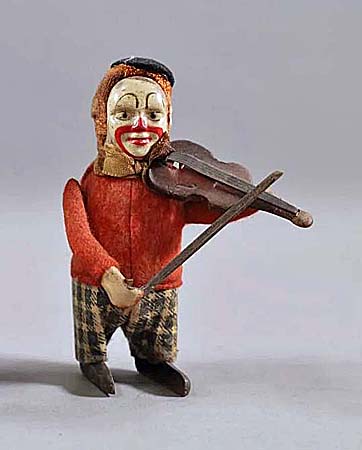
Schuco ‘Solisto’ Violinist
Germany
Lithograph tin
1930s
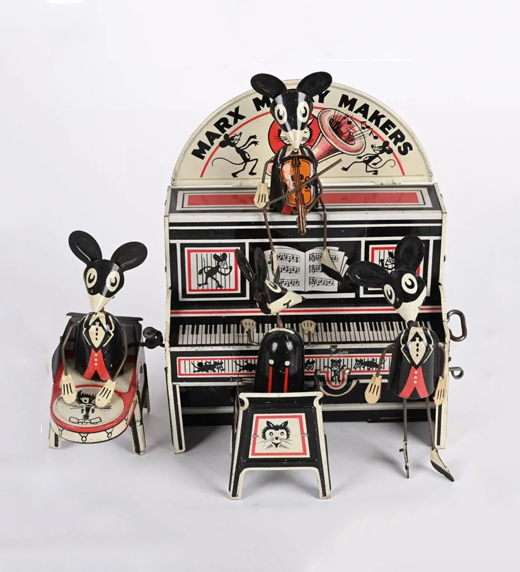
Marx ‘Merry Makers’ Mouse Band
Louis Marx & Co.
New York
Metal
1931
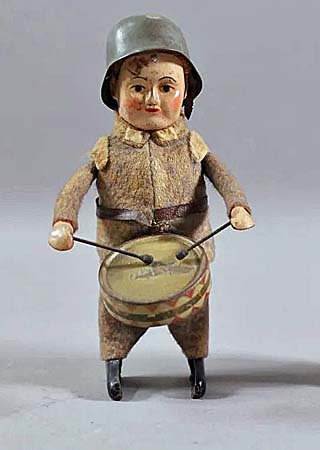
Schuco ‘Solisto’ Military Drummer
Germany
Lithograph tin
1930s
The real story about Nipper, one of the most famous dogs in the world: Nipper, a terrier mix, belonged to Mark Barraud, a scenery designer for a London theater. Barraud died in 1887 and Nipper went to live with Barraud’s brother, Francis, a painter. Nipper was long gone when Barraud painted him listening to a record, but so was the voice that came from the speaker. Mark Barraud had recorded his voice on some cylinders, and these passed to his brother. Nipper was actually listening to his dead master’s voice as he would sit there and wait for the cylinders to be played.
